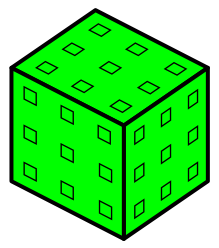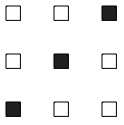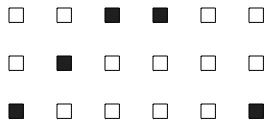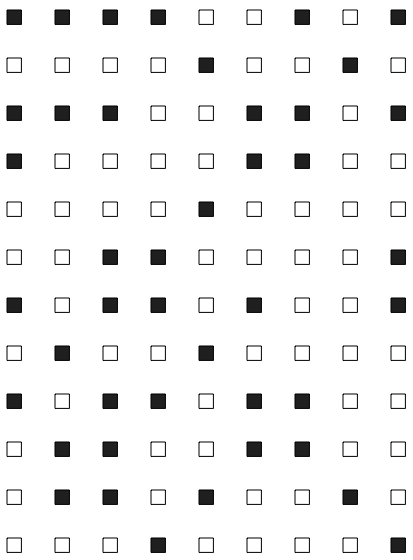Or search by topic
Number and algebra
Geometry and measure
Probability and statistics
Working mathematically
Advanced mathematics
For younger learners
Inky Cube





It is rolled over by tipping it very carefully (with no sliding) along one of the edges so that the next inky mark is right by its side. This gives;

It can roll both left and right and up and down.
When it has done several rolls, without taking it off, the paper looks like this;

Your challenge is to find out:
- where the inky spots are on each of the six faces
- where the cube was first placed
- the route that the cube has taken.
Next, you might like to try this colour version where you have to find the colours for each patch on each of the faces of the cube, as well as the route it took.

Here is a printable version of the marks left by this coloured cube.
You may also like
Plants
Three children are going to buy some plants for their birthdays. They will plant them within circular paths. How could they do this?
Junior Frogs
Have a go at this well-known challenge. Can you swap the frogs and toads in as few slides and jumps as possible?

